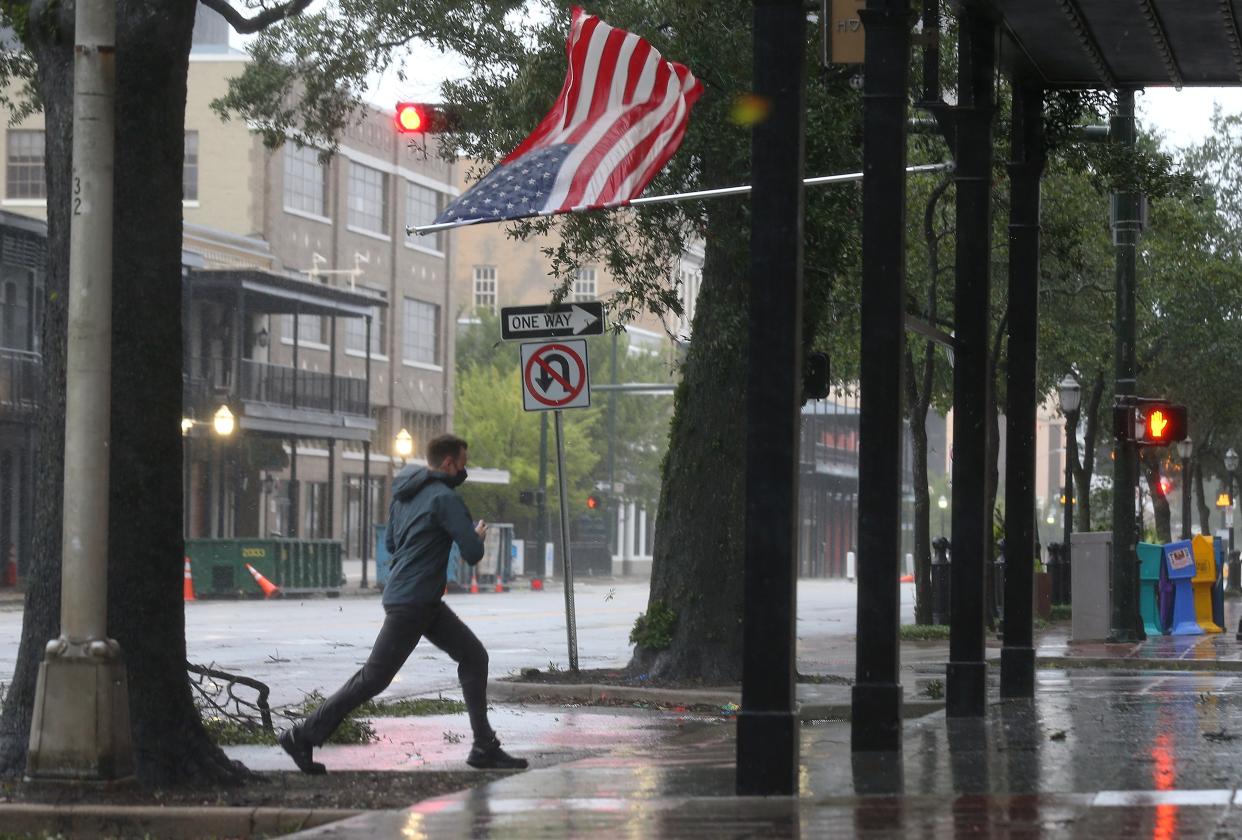If you’re wondering why people in the path of Hurricane Sally won’t evacuate, here’s the reason

Hurricane Sally has made landfall, and Alabama faces a disaster within a disaster as the state weathers a global pandemic and a life-threatening storm. It will be tempting, as it is every hurricane season, to shake your head while watching helicopters rescue people from their flooded homes on TV. You might ask: Why didn’t they just evacuate?
Before you do, think about who is staying — and why.
A Stanford study gauged the social response to “stayers” during Hurricane Katrina. They were perceived as “stupid and passive,” according to researchers. And yet the study also stated that “survivors who evacuated prior to Katrina lived in primarily middle-class white contexts, whereas survivors who stayed lived in primarily working-class Black contexts.”
Evacuation comes at a cost. Many low-income families simply can’t afford to leave. They didn’t choose to stay. They just couldn’t choose to go. The idea of having funds tucked away for a hurricane is a foreign concept for families already struggling on minimum wage salaries. A 2019 Financial Security Index from Bankrate found 28 percent of American adults have no emergency savings.
So, let’s say a family of four flees their flood-prone neighborhood for three days. Using modest estimations: Three nights in a hotel averages $300; a 500-mile round trip at 30 miles a gallon costs around $45; and three meals a day for every family member is $200.
Consider these costs while thinking about the average minimum wage in the United States, which is $7.25 an hour. It means several households are living paycheck to paycheck. It means the average low-income family does not have the disposable income to pack up everything for an unexpected emergency.
Now shake your head and ask instead: Where are the public resources helping people evacuate?
As thousands fled Texas and Louisiana at the end of August ahead of Hurricane Laura, officials recommended people find relatives to stay with, or book hotel rooms. In Alabama, officials are giving similarly detached advice: The Mobile County Emergency Management Agency advised in a social media post, “If you decide not to evacuate the area, listen for public announcements about shelters open near you.”
But for many families, staying is not a decision. It’s the only option.
When families stay out of necessity, they find themselves with few public options provided for those in difficult situations: a Red Cross shelter, for instance. The organization offers accommodation, meals, water, and post-disaster caseworkers, among other services, at no cost. In mass disasters, resources are limited. But there’s only so much the Red Cross can handle. When big disasters hit, support from the government is needed and rarely adequate.
As far as the government response goes, overwhelmed state and local authorities turn to FEMA in these worst-case scenarios. And FEMA simply cannot handle the breadth of disasters under its scope, either. The organization admitted as much in a 2018 report in the wake of its heavily criticized response after the 2017 hurricane season.
While FEMA partnered with the Red Cross to provide shelter during the infamous 2017 hurricane season that produced Irma, Harvey and Maria, the organization said itself that “no jurisdiction or federal agency has all the staff and resources it will need to respond to a catastrophic incident.”
But the American people never asked for perfection. A look at the report on FEMA reveals there is room for improvement. The organization struggled to transition survivors from mass shelter to temporary and permanent housing. Most transitioned out of shelters within 60 days in Florida and Texas. In Puerto Rico and the US Virgin Islands, shelter stays easily passed 90 days. This is too long in a shelter not knowing whether you’ll have adequate housing or the means to repair your own home.
Hurricane Harvey left around 80,000 homes with at least 18 inches of floodwater. Of the homes impacted by the storm, 80 percent of Texans did not have flood insurance, according to the FEMA report. Yet again, another nod to the obstacles low-income families face in post-disaster situations. Standard homeowners and rental insurance policies do not cover flood insurance. Opting for a pricier, specialized insurance model in the case of a disaster is an expense working-class families simply can’t afford to prioritize.
When families and individuals look to the government, FEMA’s disaster assistance doesn’t cut it. They can’t be the only available option. There’s a long application process to receive it, including a home inspection to assess the value of damaged items. And there’s a considerable backlog when disasters hit, delaying access to funds. Texans during the 2017 season were advised inspection wait times would be up to 45 days. That’s 45 days without assurance that you’ll have adequate funds or shelter.
Once the funds do go through, if you’re lucky, aid is usually dismal. FEMA promises up to $33,000 in disaster relief pay out, but averages are much lower. In 2012 for Superstorm Sandy, assistance averaged at $8,000. For Hurricane Katrina, $7,000.
Let’s change the conversation around hurricane stayers. Instead of asking why they didn’t leave, it’s time to ask why they couldn’t leave.

